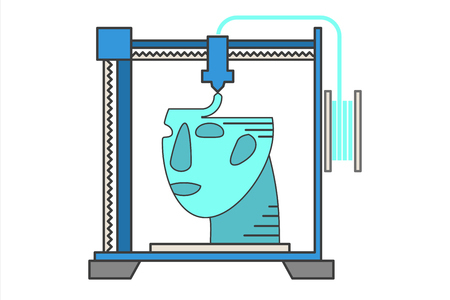A team of researchers at Wake Forest Institute for Regenerative Medicine (WFIRM) has developed a system that can bioprint human skin using a patient’s own cells. The system is mobile and can be wheeled around a healthcare facility and used by doctors to print skin tissue directly to accelerate wound healing.
There are currently several options open to doctors to treat skin wounds. While techniques and products can help to speed up the healing process and close wounds, there is currently no treatment that contributes to directly to the formation of new skin. In cases where those treatment are either not effective or cannot be used due to the extent of the wounds, a skin graft may be considered.
Skin grafts can be painful for patients and depend on the availability of healthy skin to harvest and the cost of such treatment is high. While it may be possible to obtain skin from donors, that carries a risk of rejection and increases the risk of scarring.
The new system uses skin cells – epidermal keratinocytes and dermal fibroblasts – that have been harvested from the patient. A biopsy is performed on the patient in an area of the skin that has not been injured. The harvested cells are mixed with a hydrogel and are placed in the system for printing. The system incorporates imaging technology to scan the wound that needs to be treated to determine where to print the cells. The printer then gets to work and prints the cells directly where they are needed.
Since patients’ own skin cells are used there are no issues with rejection of cells. In pre-clinical trials the system has been shown to produce tissue with the structure and function of normal human skin. The researchers observed new skin forming from the center of the wound after treatment when using skin cells that had been harvested from the patient. Attempts to use donor skin cells saw the cells rejected.
The new system has potential to greatly reduce the cost of treatment and could even eliminate the need for skin grafts in patients with chronic or large wounds and wounds that do not heal. The system could also potentially be used to treat extensive burns when there is insufficient tissue to harvest for skin grafts.
The researchers are now planning on conducting human trials to evaluate the effectiveness of the new system.
Details of the system and the pre-clinical trial have been detailed in the paper – In Situ Bioprinting of Autologous Skin Cells Accelerates Wound Healing of Extensive Excisional Full-Thickness Wounds- which was recently published in Nature Scientific Reports. DOI: 10.1038/s41598-018-38366-w
